No products in the cart.
NEWS
Growing Herbs at Home: Your Essential Guide
Discover the joy of fresh herbs! Growing your own culinary companions at home offers unparalleled flavor and aroma right at your fingertips. Whether adding zest to dishes, crafting soothing teas, enhancing well-being, or simply adding beauty to your space, cultivating herbs is a rewarding endeavor for any gardener. This guide will help you start your journey, making fresh, aromatic herbs a staple in your home.
Why Grow Your Own Herbs?
Beyond their incredible taste in cooking, many herbs offer medicinal properties or simply add delightful fragrance and visual appeal to your garden or home. Having fresh herbs steps away means you can harvest them at their peak of freshness, maximizing their flavor and beneficial compounds for all your needs.
Getting Started with Herb Gardening
Begin by selecting herbs suited to your climate and the space you have available. Most popular culinary herbs thrive in sunny spots, ideally receiving 6-8 hours of direct sunlight daily. They also require well-draining soil to prevent root rot. You can start your herbs from seeds, which offers a wide variety of choices, or purchase young plants (seedlings) from a nursery for a quicker path to harvest.
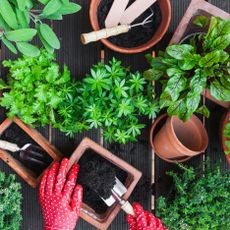 Hands gently placing small herb seedlings into pots filled with fresh compost, demonstrating the planting process.
Hands gently placing small herb seedlings into pots filled with fresh compost, demonstrating the planting process.
Popular Ways to Cultivate Herbs
You don’t need a sprawling garden to grow herbs successfully. Herbs flourish in containers, making them perfect for patios, balconies, or even sunny windowsills indoors. Hanging baskets are also great space savers, allowing herbs to trail beautifully while keeping your favorite varieties within easy reach. Simple setups like countertop gardens bring the freshness of the garden directly into your kitchen, making fresh herbs readily available whenever inspiration strikes.
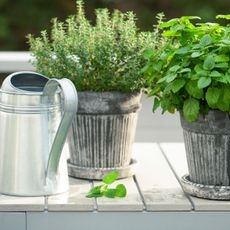 Several potted herbs in decorative silver containers alongside a watering can, ready for watering.
Several potted herbs in decorative silver containers alongside a watering can, ready for watering.
Essential Care Tips for Healthy Herbs
While generally low-maintenance, providing consistent care will ensure your herbs thrive. Water them regularly, especially container-grown herbs, but always allow the soil to dry slightly between waterings to avoid soggy conditions. Most herbs don’t need heavy feeding; a light application of a balanced organic fertilizer a few times during the growing season is usually sufficient. Regular harvesting is key – it encourages the plant to produce more foliage. Additionally, ‘pinching’ off the top leaves helps promote bushier growth, leading to higher yields and preventing leggy plants.
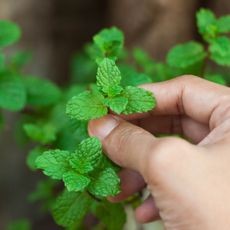 A hand demonstrating how to pinch the top leaves of a mint plant to encourage bushier growth.
A hand demonstrating how to pinch the top leaves of a mint plant to encourage bushier growth.
Harvesting and Enjoying Your Herbs
Snip leaves or stems as needed throughout the growing season, preferably in the morning after the dew has dried. For long-term storage, drying is a common and effective method that locks in much of their flavor for later use in cooking and teas. Techniques like air drying, using a dehydrator, or even microwaving can preserve your harvest. Think of creating aromatic bundles like a bouquet garni to infuse stocks and sauces with deep flavor.
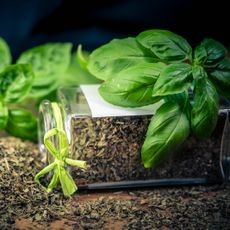 Fresh basil leaves next to a jar of dried basil, illustrating the process of preserving herbs.
Fresh basil leaves next to a jar of dried basil, illustrating the process of preserving herbs.
Discover Popular Herb Varieties
Start your herb garden with easy-to-grow favorites known for their versatility and resilience. Consider popular choices like Basil (great for pesto and Italian dishes), Mint (perfect for teas and cocktails), Cilantro (essential in many Latin American and Asian cuisines), Lavender (for fragrance and calming properties), or Bay Laurel (a staple for soups and stews). Each offers unique flavors and uses, adaptable to various growing methods described above.
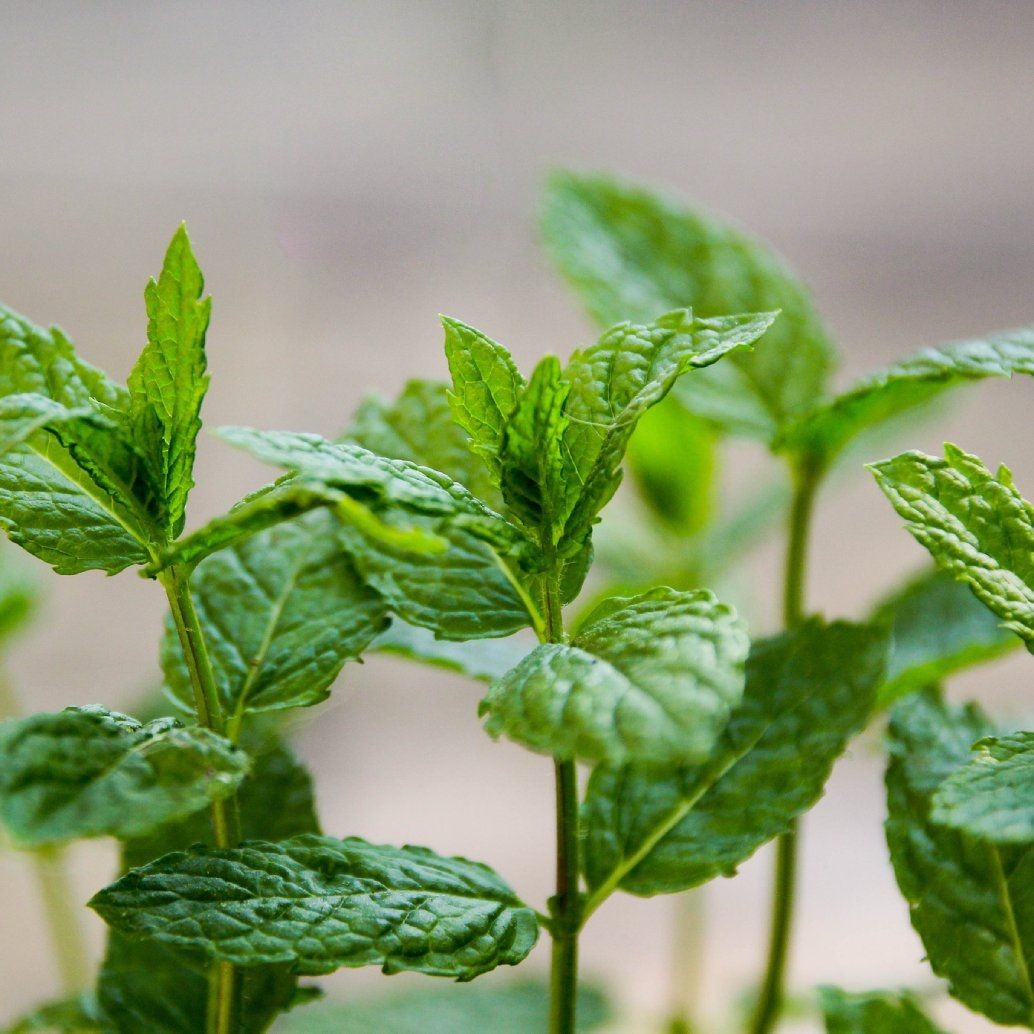 Close-up view of lush green mint plants growing densely, showing healthy foliage.
Close-up view of lush green mint plants growing densely, showing healthy foliage.
Starting your own herb garden is simpler than you might think and brings immense satisfaction. Enjoy the rewarding journey of nurturing these fragrant plants and reaping fresh rewards for your kitchen and well-being. For everything you need to begin, from quality seeds and organic soil to helpful guides, explore the resources available at Biogarden.Asia.



